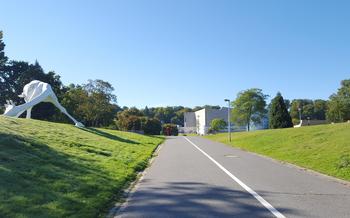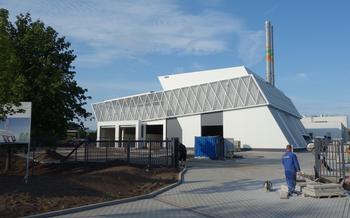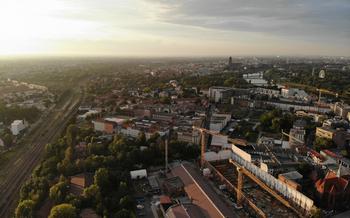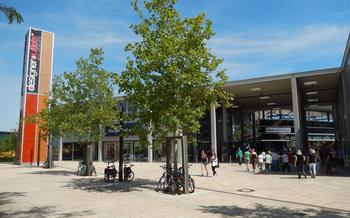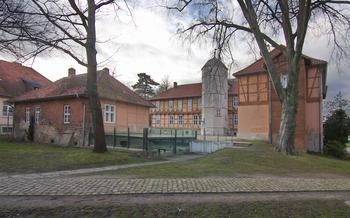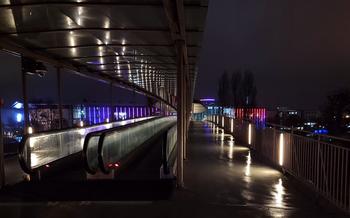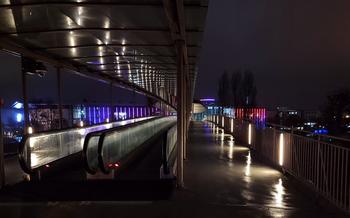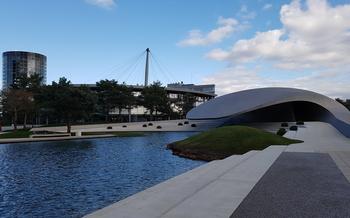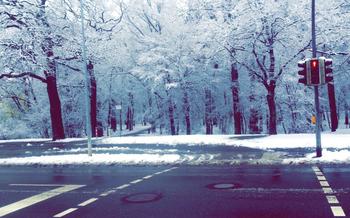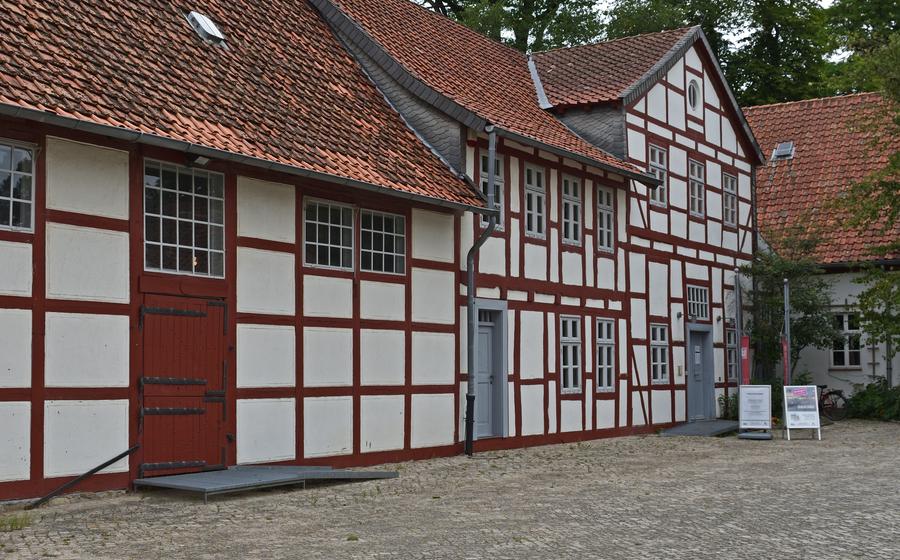
Drömling Nature Park
- Drömling Nature Park: A Hidden Gem in Germany
- Exploring the Drömling Mire
- Hiking and Biking Trails
- Birdwatching in the Drömling
- Canoeing and Kayaking
- Fishing in the Drömling
- Insider Tip
- Horseback Riding
- Picnicking and Camping
- Visiting the Nearby Towns
- Events and Festivals
- Accessibility
- Tips for Visitors
- Photography Opportunities
- Insider Tip: Uncovering the Hidden Jewel of the Drömling
Drömling Nature Park: A Hidden Gem in Germany
In the heart of Lower Saxony, Germany, lies a hidden gem waiting to be discovered: the Drömling Nature Park. This vast and unique landscape, stretching over 300 square kilometers, offers visitors a chance to immerse themselves in nature's beauty and tranquility.
The Drömling is home to a diverse array of flora and fauna, including rare and endangered species. Its vast expanses of marshland, forests, and meadows create a mosaic of habitats that support a rich variety of wildlife. Whether you're a nature enthusiast, a birdwatcher, or simply seeking a peaceful retreat, the Drömling Nature Park promises an unforgettable experience.
Exploring the Drömling Mire
The Drömling Mire is a unique and fascinating wetland ecosystem that forms the heart of the Drömling Nature Park. Covering an area of over 300 square kilometers, the mire is home to a diverse array of habitats, including open water, reed beds, marshes, and wet meadows.
The Drömling Mire is a haven for wildlife, with over 300 species of birds, 50 species of mammals, and 1,000 species of plants recorded. The mire is particularly important for breeding birds, with species such as the bittern, the marsh harrier, and the corncrake all nesting in the area. Other notable species that can be found in the mire include the white stork, the black stork, and the otter.
There are several ways to explore the Drömling Mire. Visitors can hike or bike along the many trails that crisscross the mire, or they can take a guided tour by foot, by bicycle, or by canoe. Canoeing and kayaking are particularly popular ways to explore the mire, as they allow visitors to get up close and personal with the wildlife.
One of the best ways to experience the Drömling Mire is to visit the Drömling Mire Observation Tower. Located on the edge of the mire, the tower offers panoramic views of the surrounding landscape. Visitors can also learn about the history and ecology of the mire at the Drömling Museum, which is located nearby.
Hiking and Biking Trails
The Drömling Nature Park offers a variety of hiking and biking trails that wind through the diverse landscapes of the park. These trails provide visitors with an opportunity to explore the park's unique ecosystems, including the Drömling Mire, the Aller River, and the surrounding forests.
There are over 200 kilometers of marked hiking trails in the park, ranging from easy walks to challenging hikes. Some of the most popular trails include the Drömling Rundweg, a 10-kilometer trail that circles the Drömling Mire, and the Allerauenweg, a 20-kilometer trail that follows the Aller River.
The park also offers a variety of biking trails, including both paved and unpaved routes. The Aller-Radweg, a 300-kilometer trail, is a popular choice for cyclists of all levels. The trail follows the Aller River from its source in the Harz Mountains to its confluence with the Weser River.
Maps and guides for the hiking and biking trails in the park are available at the Drömling Nature Park Visitor Center. Visitors can also find information on the park's trails online.
Some of the most popular hiking trails in the park include:
- Drömling Rundweg: This 10-kilometer trail circles the Drömling Mire, offering stunning views of the landscape. The trail is relatively flat and easy to walk, making it a good option for families with young children.
- Allerauenweg: This 20-kilometer trail follows the Aller River, passing through forests, meadows, and wetlands. The trail is moderately challenging, with some sections that are muddy or uneven.
- Heideweg: This 15-kilometer trail takes hikers through the Lüneburg Heath, a vast expanse of heathland that is home to a variety of plants and animals. The trail is moderately challenging, with some sections that are sandy or hilly.
Some of the most popular biking trails in the park include:
- Aller-Radweg: This 300-kilometer trail follows the Aller River from its source in the Harz Mountains to its confluence with the Weser River. The trail is mostly flat and paved, making it a good option for cyclists of all levels.
- Drömling-Radweg: This 100-kilometer trail circles the Drömling Mire, offering cyclists stunning views of the landscape. The trail is mostly flat and paved, with some sections that are unpaved.
- Heide-Radweg: This 200-kilometer trail takes cyclists through the Lüneburg Heath, a vast expanse of heathland that is home to a variety of plants and animals. The trail is mostly flat and paved, with some sections that are unpaved.
Birdwatching in the Drömling
The Drömling Nature Park is a haven for birdwatchers, with over 300 species of birds recorded in the park. The park is home to a variety of habitats, including wetlands, forests, and grasslands, which provide a home for a wide variety of bird species. Some of the most common birds that can be seen in the park include herons, egrets, ducks, geese, and cranes. The park is also home to a number of rare and endangered bird species, such as the black stork and the white-tailed eagle.
The best time for birdwatching in the Drömling is during the spring and fall migrations, when thousands of birds pass through the park. However, there are many birds that can be seen in the park year-round. There are a number of birdwatching towers and hides located throughout the park, which provide visitors with a great opportunity to observe birds without disturbing them. There are also a number of guided birdwatching tours available, which can help visitors learn more about the birds of the park and find the best spots for birdwatching.
Canoeing and Kayaking
Canoeing and kayaking are popular activities in the Drömling Nature Park, offering a unique perspective of the mire and its wildlife. Visitors can rent canoes or kayaks from several locations within the park, including the Drömling Visitor Center and the Kanu- und Bootsverleih Brome.
There are several different canoeing and kayaking routes available, ranging from short paddles through the canals to longer expeditions across the open water. Some of the most popular routes include the Drömling Rundweg, a 12-kilometer loop around the mire, and the Aller-Ohre-Kanal, a 25-kilometer route that connects the Drömling with the nearby Aller and Ohre rivers.
For safety reasons, visitors are required to wear life jackets while canoeing or kayaking in the park. There are also several regulations in place to protect the park's environment, such as a ban on motorized boats and a speed limit of 5 kilometers per hour.
Guided canoeing and kayaking tours are available for those who want to learn more about the park's history and ecology. These tours are led by experienced guides who can provide information about the different plants and animals that can be found in the mire.
Fishing in the Drömling
The Drömling Nature Park offers a variety of fishing opportunities for anglers of all skill levels. The park's waters are home to a variety of fish species, including pike, perch, zander, carp, and bream. The best fishing spots can be found in the park's many canals, rivers, and lakes.
Anglers should be aware of the fishing regulations in the park before casting their lines. A valid fishing license is required to fish in the park, and there are restrictions on the types of bait and tackle that can be used. Visitors can obtain a fishing license from the park office or from local tackle shops.
Guided fishing tours are available for visitors who want to learn more about the park's fishing opportunities. These tours are led by experienced anglers who can provide tips and advice on how to catch fish in the park.
Insider Tip
One of the best-kept secrets in the Drömling Nature Park is the hidden lake known as the "Förstersee". This small lake is located in the heart of the park and is surrounded by a dense forest. The lake is home to a variety of fish species, including pike, perch, and zander.
To find the Förstersee, visitors should follow the hiking trail that leads from the village of Drömling to the village of Brome. The lake is located about halfway between the two villages.
Visitors should be aware that the Förstersee is a protected area, and fishing is only allowed with a valid permit. Permits can be obtained from the park office or from local tackle shops.
Horseback Riding
Where can visitors go horseback riding in the park?
Visitors can go horseback riding at the Drömling Nature Park Riding School. The riding school offers a variety of horseback riding trails for all levels of riders, from beginners to experienced riders. The trails wind through the beautiful forests and meadows of the park, offering riders a chance to experience the park's natural beauty from a unique perspective.
What are the different horseback riding trails available?
The Drömling Nature Park Riding School offers a variety of horseback riding trails, ranging from short trails suitable for beginners to longer trails for more experienced riders. Some of the most popular trails include the Forest Trail, the Meadow Trail, and the River Trail. The Forest Trail winds through the dense forests of the park, offering riders a chance to see the park's wildlife up close. The Meadow Trail takes riders through the park's open meadows, offering stunning views of the surrounding countryside. The River Trail follows the course of the Drömling River, offering riders a chance to see the park's aquatic wildlife.
Are there any guided horseback riding tours available?
Yes, the Drömling Nature Park Riding School offers guided horseback riding tours for all levels of riders. The tours are led by experienced guides who can help riders learn about the park's history, culture, and natural beauty. The tours also offer riders a chance to see some of the park's most popular attractions, such as the Drömling Mire and the Drömling Museum.
What are the safety regulations for horseback riding in the park?
For the safety of both riders and horses, there are a number of safety regulations that must be followed when horseback riding in the Drömling Nature Park. These regulations include wearing a helmet, wearing proper footwear, and staying on the designated trails. Riders must also be aware of their surroundings and be respectful of other park visitors.
Picnicking and Camping
The Drömling Nature Park offers a variety of opportunities for picnicking and camping. Several picnic spots are located throughout the park, providing visitors with stunning views of the mire and the surrounding countryside. These spots are equipped with tables, benches, and grills, making them ideal for a leisurely picnic lunch or dinner.
For those who prefer to stay overnight, the park offers several designated camping areas. These campgrounds are located in beautiful settings, offering visitors a chance to experience the peace and tranquility of the mire. The campgrounds are equipped with basic amenities such as restrooms, showers, and fire pits. Camping fees are reasonable, and visitors can choose from a variety of campsites, including tent sites, RV hookups, and cabins.
Whether you're looking for a quick picnic lunch or a weekend camping trip, the Drömling Nature Park has something to offer everyone. So pack your bags, grab your tent, and get ready to explore this beautiful and unique natural treasure.
Visiting the Nearby Towns
The Drömling Nature Park is surrounded by several charming towns and villages, each with its own unique character and attractions. Visitors can explore the historic town of Wolfsburg, with its impressive castle and Volkswagen museum. They can also visit the town of Oebisfelde, with its beautiful half-timbered houses and vibrant market square. Other nearby towns worth exploring include Wittingen, with its historic town center, and Gifhorn, with its scenic canals and moated castle.
In these towns, visitors can find a variety of attractions, including museums, galleries, shops, and restaurants. They can also enjoy a variety of activities, such as guided tours, boat trips, and bike rides. There are also several festivals and events held in these towns throughout the year, offering visitors a chance to experience the local culture and traditions.
To make the most of their visit, visitors can book a guided tour of one or more of the nearby towns. These tours typically provide visitors with a wealth of information about the history, culture, and attractions of the town. They can also help visitors to find the best places to eat, shop, and stay.
Events and Festivals
Throughout the year, the Drömling Nature Park comes alive with a variety of events and festivals that celebrate the region's unique culture and natural beauty. These events offer visitors a chance to experience the park in a whole new light and to learn more about its history and traditions.
Some of the most popular events include the Drömling Nature Park Festival, which takes place every year in September and features a variety of activities such as guided hikes, boat tours, and live music. Another popular event is the Drömling Birdwatching Festival, which takes place every year in May and offers visitors the chance to see some of the park's many bird species.
Other events and festivals that take place in the park throughout the year include the Drömling Farmers Market, the Drömling Art Festival, and the Drömling Christmas Market. These events are a great way to experience the local culture and to find unique gifts and souvenirs.
Most of the events and festivals in the Drömling Nature Park are free to attend, but some may require a small fee. For more information on upcoming events and festivals, please visit the park's website or contact the park's visitor center.
Accessibility
The Drömling Nature Park is committed to providing an accessible and enjoyable experience for all visitors, including those with disabilities. Several wheelchair-accessible trails and facilities are available to make the park more accessible to people with disabilities. These include:
-
Wheelchair-accessible trails: There are several wheelchair-accessible trails in the park, allowing visitors with disabilities to explore the beautiful landscapes and wildlife of the Drömling Mire. These trails are well-maintained and have a smooth surface, making them easy to navigate for wheelchair users.
-
Accessible visitor center: The Drömling Nature Park visitor center is wheelchair accessible, with ramps and elevators providing easy access to all areas of the building. The visitor center staff is also trained to assist visitors with disabilities and can provide information about accessible trails and facilities.
-
Accessible restrooms: There are several accessible restrooms located throughout the park, ensuring that visitors with disabilities can easily find a restroom when needed. These restrooms are equipped with grab bars, wide doorways, and accessible sinks and toilets.
-
Accessible parking: There are several accessible parking spaces located near the visitor center and other park facilities. These spaces are clearly marked and provide ample space for wheelchair users to get in and out of their vehicles.
-
Discounts for visitors with disabilities: Visitors with disabilities can receive a discounted rate on park admission and other fees. This discount is available to individuals with a valid disability ID card.
-
Accessible transportation: There are several accessible transportation options available to visitors with disabilities who want to visit the Drömling Nature Park. These options include:
-
Public transportation: The park is accessible by public transportation, with several bus routes stopping near the visitor center. These buses are equipped with ramps and lifts to accommodate wheelchair users.
- Taxi service: There are several taxi companies that offer accessible transportation services to the park. Visitors can contact these companies in advance to arrange for a pickup and drop-off.
- Rental cars: Several rental car companies offer wheelchair-accessible vehicles. Visitors can rent these vehicles and drive themselves to the park.
Tips for Visitors
-
Plan your visit ahead of time. The Drömling Nature Park is a large and diverse area, so it's important to plan your visit ahead of time to make the most of your time. Decide which areas you want to explore and what activities you want to participate in.
-
Choose the right time to visit. The park is open year-round, but the best time to visit is during the spring or fall when the weather is mild and the wildlife is most active.
-
Bring the right gear. Be sure to pack comfortable shoes, a hat, sunscreen, insect repellent, and binoculars. If you're planning on doing any water activities, bring a swimsuit and towel.
-
Take your time. The Drömling Nature Park is a place to relax and enjoy the natural beauty. Don't try to rush your visit. Take your time to explore the different areas of the park and soak in the scenery.
-
Be respectful of the wildlife. The Drömling Nature Park is home to a variety of wildlife, so it's important to be respectful of their habitats. Stay on the designated trails and avoid disturbing the animals.
-
Take a guided tour. If you're short on time or want to learn more about the park, consider taking a guided tour. Guided tours are available for a variety of activities, including hiking, biking, birdwatching, and canoeing.
Photography Opportunities
The Drömling Nature Park offers endless photography opportunities for both amateur and professional photographers. The stunning landscapes, diverse wildlife, and colorful wildflowers create a picturesque backdrop for capturing unforgettable images. To make the most of your photography experience, consider bringing a camera with a telephoto lens to capture close-up shots of birds and other wildlife. A tripod will also be useful for stabilizing your camera for long-exposure shots.
Some of the most popular photography spots in the park include the Drömling Mire, where you can capture stunning shots of the vast marshland and its inhabitants. The Drömling Museum also offers some great photo opportunities, with exhibits showcasing the park's history, culture, and wildlife. For birdwatching enthusiasts, the park's many birdwatching towers and hides provide excellent vantage points for capturing stunning shots of the park's feathered inhabitants.
If you're interested in improving your photography skills, consider attending one of the many photography workshops or classes offered in the park. These workshops are led by experienced photographers who can teach you the basics of photography and help you develop your skills. The park also hosts regular photo contests and exhibitions, providing a great opportunity to showcase your work and connect with other photographers.
Insider Tip: Uncovering the Hidden Jewel of the Drömling
Nestled in the heart of the Drömling Nature Park, a hidden gem awaits exploration—the Drömling Mire Observation Tower. Ascend the tower's spiral staircase to be rewarded with breathtaking panoramic vistas of the surrounding landscape. From this vantage point, marvel at the intricate tapestry of forests, meadows, and shimmering waterways that define this unique ecosystem. Spot diverse bird species soaring overhead, and on a clear day, catch a glimpse of the distant Harz Mountains. Remember to bring your binoculars to enhance your wildlife-spotting experience. For an unforgettable encounter with nature, plan your visit during sunrise or sunset to witness the sky ablaze with color, casting a magical glow over the Drömling Mire.
